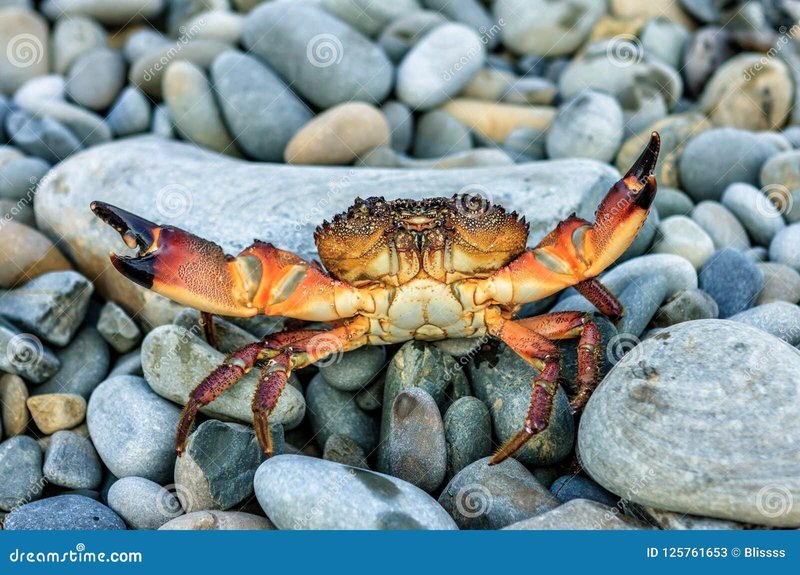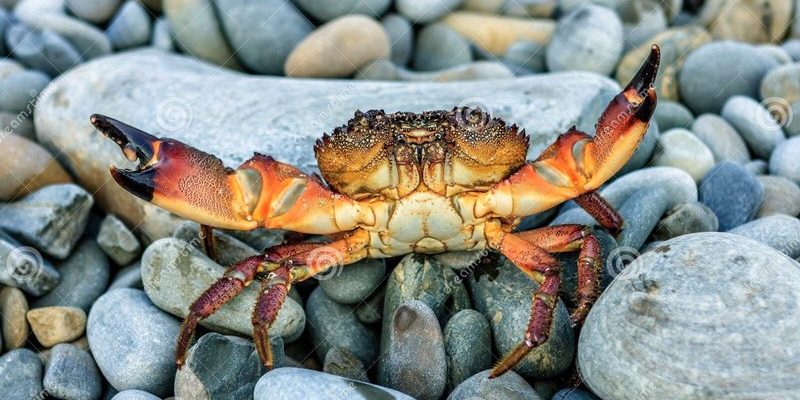
In this article, we’ll dive deep into the common threats to crabs in the wild. From hungry predators to changing environments, we’ll explore what these challenges mean for crab populations and their ecosystems. So, grab a cup of coffee, and let’s chat about the unsung heroes of the sea and the struggles they face.
Predator Pressure: Who’s After Crabs?
Crabs may have a tough exterior, but they’re often on the menu for many ocean inhabitants. Predators like fish, birds, and even other crabs see crabs as a tasty treat. Snapper, sea turtles, and otters love to munch on these little guys.
Imagine being a crab, scuttling along the seafloor, when suddenly a shadow looms overhead. That could be a hungry fish or a bird ready to swoop down for a snack! This predator-prey relationship keeps nature in balance, but it also means crabs have to be crafty. They often use their environment for camouflage or find hiding spots in the rocks and crevices of the ocean floor.
As food sources fluctuate, predator populations can also change. If a certain fish species thrives, you can bet crabs are going to feel the squeeze. This dance between predator and prey is one of the most significant threats crabs face, reminding us how interconnected marine life really is.
Habitat Loss: Where Have All the Crabs Gone?
Crabs thrive in specific environments, from sandy beaches to rocky shores. However, habitat loss is one of the biggest threats they face. Think about it: just like we need comfortable homes, crabs need safe places to live, grow, and reproduce. Unfortunately, human activities are disrupting these habitats left and right.
Coastal development, like building houses and roads near the shore, can destroy critical crab habitats. Wetlands and mangroves, where many crabs like to make their homes, are also being drained for farming or construction. This has a ripple effect, influencing not just crabs but countless other species that depend on these ecosystems.
Additionally, rising sea levels due to climate change threaten to inundate these habitats. For crabs that are already navigating a challenging life, losing their homes makes survival even harder. So, let’s think about how our actions impact these resilient creatures and the ecosystems they belong to.
Pollution: A Silent Enemy to Crabs
Imagine swimming in a beautiful ocean only to find it littered with trash and chemicals. Sadly, this is a reality for many crabs. Pollution is another significant threat in their world. Chemicals from agricultural runoff, plastic waste, and oil spills find their way into the water, severely impacting crabs’ health and reproduction.
Toxins can accumulate in crabs, causing problems in their growth and development. This can lead to issues like deformities or even death. Plus, when crabs consume polluted food sources, they’re essentially ingesting a cocktail of harmful substances. Think of it as a double whammy that not only affects individual crabs but can also harm entire populations.
Moreover, microplastics have become pervasive in oceans, and they can be found in crab habitats. When crabs mistakenly consume these tiny particles, it can lead to digestive issues and other health problems. This pollution crisis highlights the need for stronger environmental protections to ensure crabs—and the ecosystems they inhabit—can thrive.
Climate Change: The Big Picture
Climate change isn’t just a buzzword; it’s something that directly impacts crabs. As ocean temperatures rise, it alters their habitats and food sources. Cold-water crabs, for instance, might find it challenging to survive in warmer waters, which can lead to dwindling populations.
Rising temperatures can also lead to bleaching of coral reefs, disrupting the delicate balance of marine life. Crabs that depend on coral habitats may struggle to find food and shelter. In essence, climate change creates a domino effect that can reverberate through entire ecosystems.
Additionally, extreme weather events, such as hurricanes and storms, can severely damage crab habitats. These changes can create environments that are less suitable for crabs, pushing them to migrate and find new homes. This not only puts stress on crabs but also on the ecosystems they enter, as they adapt to new surroundings.
Overfishing: The Consequences of Human Activity
Overfishing doesn’t just impact the targeted species; it has wider implications for the entire ecosystem, including crabs. When fish populations are overharvested, it can lead to an imbalance in marine food webs, leaving crabs without their usual food sources.
For example, if a specific fish species that preys on crabs declines, this can cause a spike in crab populations. While that might sound good on the surface, overpopulation can lead to competition for resources and habitat, resulting in starvation or disease.
Moreover, fishing practices can accidentally catch crabs in nets, leading to significant population losses. This unintended consequence highlights the importance of sustainable fishing practices to ensure that crabs and other marine life can thrive.
Invasive Species: Unwanted Guests
Invasive species are like party crashers in the marine world. These are animals or plants that don’t belong in a certain ecosystem but somehow make their way in. They can disrupt local populations, including crabs, by competing for resources or preying on them.
Here’s the thing: when invasive species enter a crab’s habitat, they often bring along challenges that native species aren’t equipped to handle. For instance, some invasive fish species may eat crabs or compete for food sources. This can shift the balance of the entire ecosystem, putting additional stress on crab populations.
To combat these invasive species, we need to focus on protecting habitats and promoting biodiversity. Conservation efforts can help create a more balanced ecosystem where crabs can thrive alongside other marine life.
Crabs might seem small and insignificant, but their role in the ecosystem is anything but. They face a range of threats, from predators to pollution, and we all share the responsibility of helping them navigate these challenges. By understanding these threats, we can better advocate for policies and practices that protect their habitats and health.
Honestly, it’s essential to remember that every tiny creature plays a role in our planet’s well-being. Whether through heartfelt donations or simply picking up trash on the beach, we can all contribute to ensuring crabs and their marine friends have a fighting chance. So, next time you spot a crab on the shore, think about the incredible challenges it endures every day—and how we can help.

